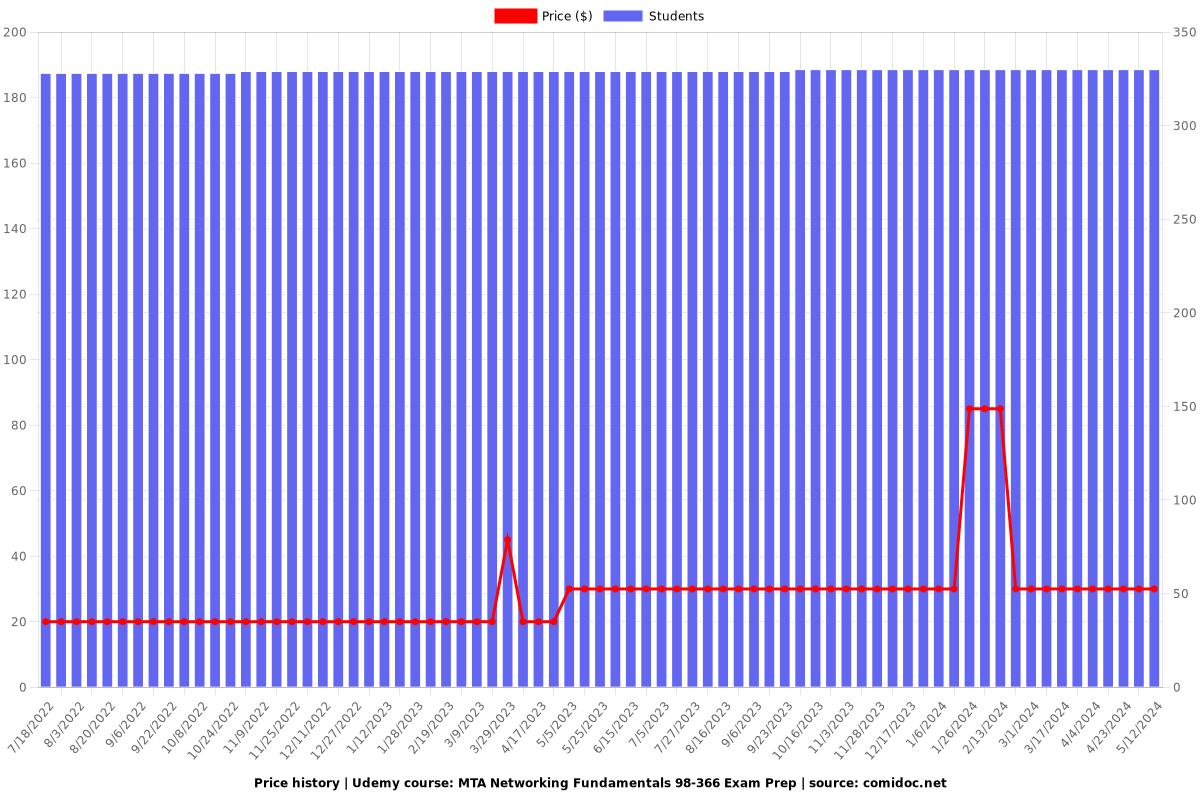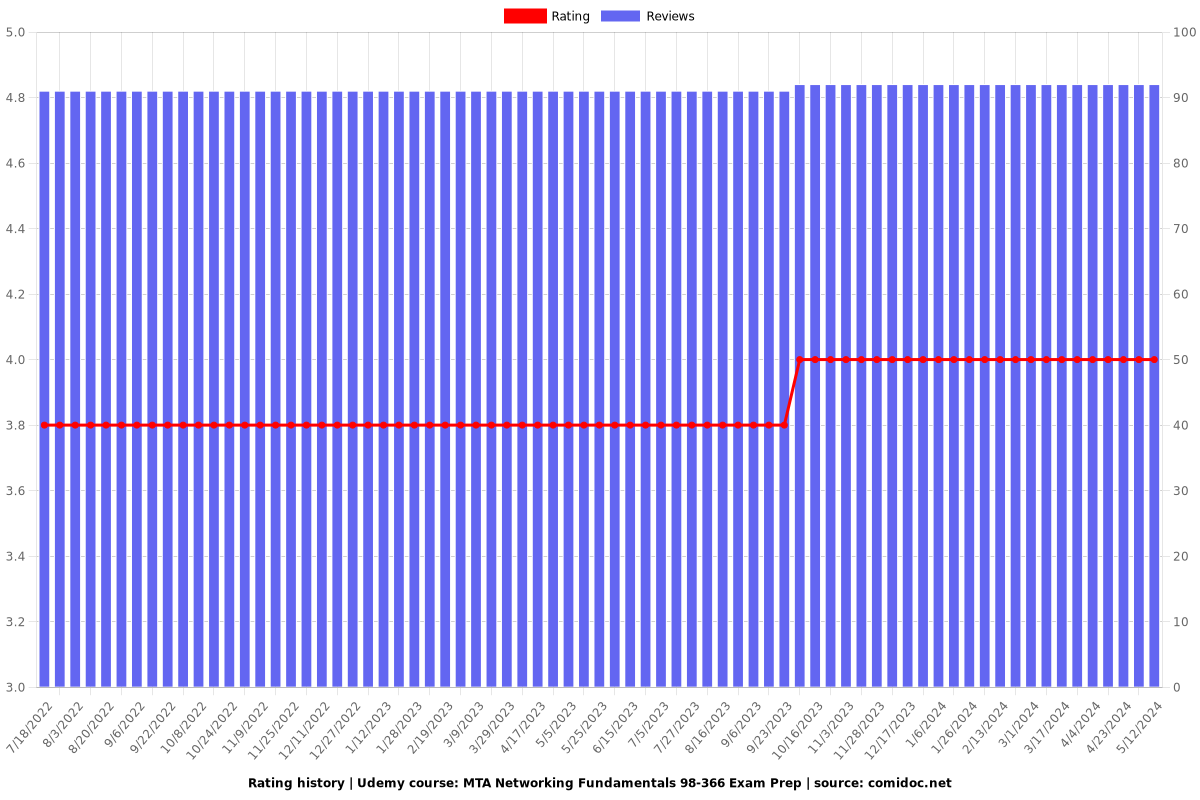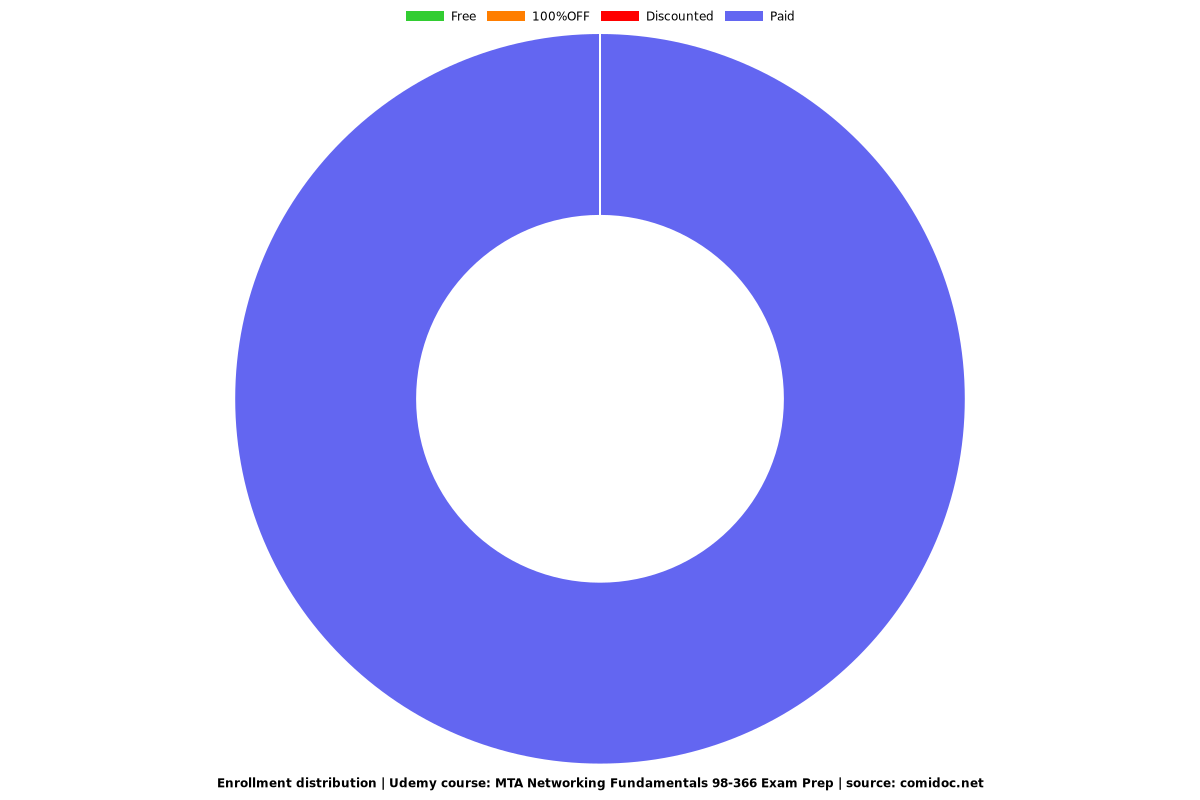MTA Networking Fundamentals 98-366 Exam Prep
Successfully Prepare for the MTA 98-366 Networking Fundamentals certification exam by using the best practice tests 2021

What you will learn
Students will be able to gain confidence and prepare for the MTA: Networking Fundamentals Certification Exam
Networking Topologies
Networking Ports and Protocols
Understand the concepts of Internet, intranet, and extranet
Understand local area networks (LANs)
Understand wide area networks (WANs)
Network topologies and access methods
Open Systems Interconnection (OSI) model
IPv4 and IPv6
TCP/IP and Networking Commands
Able to answer questions on, Routers, Switches and Media types
Why take this course?
****This is only a Preparation Test course, aimed to help you in your final preparation for the certification exam. This course is not a video or lecturing course, and Formal or Informal training is strongly recommended.****
MTA Networking Fundamentals 98-366 Best Prep Tests 2021
These practice test are here to help you successfully prepare for the certification exam, Gain confidence to successfully pass the certification exam.
This MTA: Networking Fundamentals Certification Prep Tests - Will test your knowledge on the following categories:
Understand the concepts of Internet, intranet, and extranet
Virtual Private Network (VPN), security zones, firewalls
Understand local area networks (LANs)
Perimeter networks; addressing; reserved address ranges
for local use (including local loopback IP), VLANs; wired LAN and
wireless LAN
Understand wide area networks (WANs)
Leased lines, dial-up, ISDN, VPN, T1, T3, E1, E3, DSL, cable, and more, and their characteristics (speed, availability)
Understand wireless networking
Types of wireless networking standards and their
characteristics (802.11a,b,g,n, including different GHz ranges), types
of network security (WPA, WEP, 802.1X, and others), point-to-point (P2P)
wireless, wireless bridging
Understand network topologies and access methods
Star, mesh, ring
Understand switches
Transmission speed, number and type of ports, number of
uplinks, speed of uplinks, managed or unmanaged switches, VLAN
capabilities, Layer 2 and Layer 3 switches and security options,
hardware redundancy, support, backplane speed, switching types and MAC
table, understand capabilities of hubs versus switches
Understand routers
Transmission speed considerations, directly connected
routes, static routing, dynamic routing (routing protocols), default
routes; routing table and how it selects best route(s); routing table
memory, network address translation (NAT), software routing in Windows
Server; Quality of Service (QoS)
Understand media types
Cable types and their
characteristics, including media segment length and speed; fiber optic;
twisted pair shielded or nonshielded; catxx cabling, wireless;
susceptibility to external interference (machinery and power cables);
susceptibility to electricity (lightning), susceptibility to
interception
Understand the Open Systems Interconnection (OSI) model
OSI model; Transmission Control Protocol (TCP) model;
examples of devices, protocols, applications, and which OSI/TCP layer
they belong to; TCP and User Datagram Protocol (UDP); well-known ports
for most used purposes (not necessarily Internet); packets and frames
Understand IPv4
Subnetting, IPconfig, why use Internet Protocol version 4
(IPv4), addressing, ipv4toipv6 tunneling protocols to ensure backward
compatibility, dual IP stack, subnetmask, gateway, ports, packets,
reserved address ranges for local use (including local loopback IP)
Understand IPv6
Subnetting, IPconfig, why use IPv6, addressing,
ipv4toipv6 tunneling protocols to ensure backward compatibility, dual IP
stack, subnetmask, gateway, ports, packets, reserved address ranges for
local use (including local loopback IP)
Understand names resolution
DNS, Windows Internet Name Service (WINS), steps in the name resolution process
Understand networking services
Dynamic Host Configuration Protocol (DHCP), remote access
Understand TCP/IP
Tools (such as ping), tracert, pathping, Telnet,
IPconfig, netstat, reserved address ranges for local use (including
local loopback IP), protocols
Fully prepare for the MTA: Networking Fundamentals Certification exam.
****This course is updated as soon as exam objectives change or when new technology knowledge needs to be tested****
Reviews
Charts
Price

Rating

Enrollment distribution
